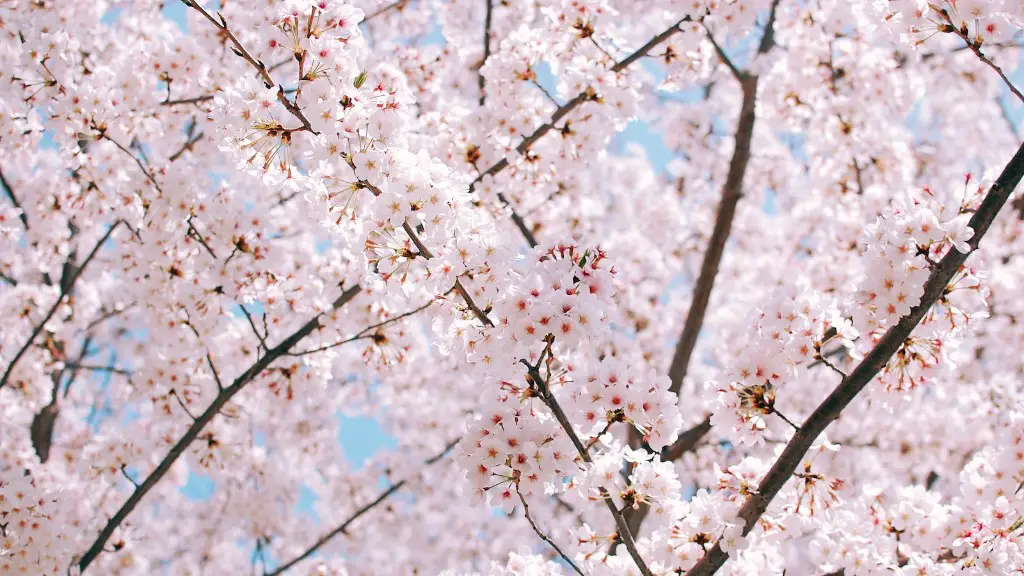Excessive Heat Or Cold Lead To Dropping Leaves
Palm trees grow in tropical and often warm climates that provide shelter from intense sunlight and wind. Despite this, some palm trees still experience leaf browning from excessive heat, cold, or wind. This can be caused by a variety of factors. Poor soil drainage, insufficient irrigation, and improper sunlight exposure can all lead to browning leaves on a palm tree.
Many people assume that the leaves on their palm tree are browning due to too much sunlight, but this is not always the case. Uneven light exposure, such as when one side of the palm tree receives too much sunlight, can also cause browning leaves. Too much water can also result in the leaves turning brown and falling off. This is because palm trees typically prefer well-drained soils where the roots can breathe. If the soil is too saturated with water, the leaves will start to brown and drop off.
Cold weather can also cause leaves to brown and fall off palm trees. If the tree is exposed to temperatures below zero, the leaves may suffer frost damage and turn brown. Even if the tree is in an area with temperatures above 0 degrees Celsius, cooler temperatures can still cause damage to the leaves and bark if the tree is not properly insulated.
Poor Nutrition And Disease
Nutritional deficiencies can also contribute to the browning of palm leaves. Typically, palms need a lot of nitrogen to help keep their leaves green and healthy. If the soil lacks this nutrient, the leaves will start to brown and then drop off.
Insect infestations and disease can also cause leaves to brown and fall off of a palm tree. Insects like scale or red palm weevil can suck the life out of a palm tree, causing the leaves to brown and eventually fall off. Diseases such as ganoderma or bud rot can also cause significant damage to leaves and other parts of the tree if left untreated.
What To Do When Your Palm Tree Has Brown Leaves
When it comes to preventing the leaves on your palm tree from browning, it is important to keep the soil well-drained, provide proper irrigation, and ensure the tree gets enough sunlight. If you suspect that there is an imbalance in the soil or too much water is causing problems with the leaves, try to correct the issue by adding more nutrients or reducing the amount of water you give the tree.
You should also prune the tree regularly and inspect its leaves for signs of insect infestations or diseases. If you notice any of these issues, it is important to take the right measures to control the pests or treat the disease. This can include applying proper pesticides or using a fungicide to prevent the disease from spreading.
Prevent Cold Weather Damage
In colder climates, it is especially important to protect a palm tree against cold weather, as even relatively mild temperatures can lead to significant damage. If you live in an area with cold weather, you should wrap the tree in insulation and make sure that it is sheltered from strong winds. You should also set up a sprinkler system to ensure the tree is regularly watered during winter.
Additionally, another way to protect a palm tree from cold weather is to use a high-quality fertilizer designed for palms. This type of fertilizer should provide the tree with enough nutrients to keep its leaves healthy and vibrant, even in colder climates.
Address Under-Watering Or Over-Watering
If you are noticing browning leaves on your palm tree and you think it could be caused by improper irrigation, there are a few steps you can take to address the situation. If you are overwatering your palm tree, reduce the amount of water you give it. If you are under-watering, it is important to increase the amount of water and make sure the soil is well-drained.
You can also apply a slow-release fertilizer to the tree, as this will help ensure the tree is getting the right amount of nutrients it needs. Additionally, you should ensure that your palm tree is getting enough sunlight exposure, as this can be beneficial for its overall health.
Incorrect Potting Or Planting Techniques
Incorrect potting or planting techniques can also lead to browning leaves on a palm tree. If the tree is not planted in the correct potting mix or soil, it can be prone to nutrient deficiencies that can cause the leaves to brown. When planting or potting a palm tree, make sure you use a quality soil mix that is specifically designed for palm trees, as this can help ensure the tree gets the nutrients it needs.
Additionally, you should avoid planting the tree too deeply in the soil, as this can limit its ability to take in oxygen and other necessary nutrients. When planting or potting a palm tree, make sure the soil is slightly above the root base, allowing for proper oxygen exchange between the roots and soil.
Disease Prevention And Treatment
Making sure your palm tree is healthy is essential to preventing diseases and insect infestations that can lead to browning leaves. If you suspect that the tree has some kind of disease or pest infestation, you should take the appropriate steps to control it. If a disease is causing the browning of the leaves, you should use a fungicide to treat the tree.
For insect infestations, you should use a pesticide to get rid of the pests. Additionally, you should keep an eye out for other signs of diseases or pests that could cause the leaves to brown, such as discolored bark or dark spots on the leaves. If the tree is healthy, it should be well-equipped to fight off any diseases or pests that may try to damage it.
Summary Of The Best Practices For Keeping Palm Trees Healthy
There are several best practices for keeping your palm tree healthy and preventing browning of its leaves. Make sure that the tree is planted in a quality potting mix, get enough fertilizer and irrigation, and provide proper sunlight exposure. Additionally, take steps to protect the tree from extreme temperatures and make sure it is regularly checked for insect infestations or diseases. Following these steps should help ensure that the palm tree stays healthy and its leaves stay vibrant and green.


